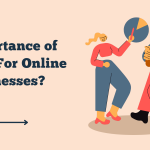What comes to mind when you think of a brand? Is it the famous Nike swoosh or the rich brown and gold LV for Louis Vuitton?
Brands are more than signature colors, fonts, and logos. A brand is about evoking a feeling in a customer and a promise of a memorable experience.
Brand assets can certainly connect with this promise, but creating a strong brand requires calculated decisions to foster the perception you want.
Many times, startups become focused on product development instead of building a brand. Marketing and branding become an expense, not a long-term investment.
How to Build Brand Success
Focus the Story Around the Customer
The brand story tells the customer who you are and what you stand for as a brand, shaping your interactions. Your brand story should offer a clear understanding of your business’s purpose and what you seek to achieve.
Customers aren’t just searching for great deals – they want to connect with brands that reinforce their sense of self. An effective brand story creates a strong emotional connection between a brand and the customer, attracting more of the audience without a massive ad spend.
Brand stories don’t have to be elaborate. Some of the most successful brand stories are simple and focus on the problem the business is trying to solve, how it solved it, and the outcome. Use your brand story to connect your purpose with the customers and their needs.
Let Customer Insights, Not Product Features, Drive the Strategy
Your product is the focus of your business, so it follows that you want to show it off with marketing content that highlights its features. Product features deliver the solutions for the customer, but highlighting them instead of the real-world benefits forces the customer to connect the dots.
Connect with the customer by highlighting the real-world benefits of your product’s features, not the features themselves. Focus on the benefits with rich context, so customers can see how the product can fit into their lives and address their pain points.
This doesn’t mean product features should never be mentioned. Focusing on the customer is about addressing the customer’s pain points and helping them solve their problems, then showing how your product and its features can do that.
Develop Touchpoints for the Whole Customer Journey
Touchpoints are a vital part of the customer journey – this is where customers interact with your brand and get an impression of your brand, product, or service. These touchpoints give you an opportunity to create brand loyalty and deliver a positive customer experience.
Each touchpoint in the customer journey should be consistent with the brand and your overall messaging. You should plan touchpoints to represent your brand clearly and accurately to attract new audiences and motivate customers to take action.
You can create touchpoints by asking the following questions:
- What is the first impression of the brand?
- How is the brand different than the competitors?
- Does this messaging attract prospects?
- Is the messaging consistent with the brand identity?
- Does the touchpoint motivate customers to take an action?
- Does the touchpoint leave a positive impression on the customer?
- Think like a customer and you can develop a customer journey that creates a positive impression.
Powerful Brand Strategies
Each brand is unique, but some broad strategies can help you create your own brand marketing strategy and tailor it to your needs.
Don’t Forget CX
Startups tend to place value on user experience (UX), instead of customer experience (CX). Both are important for your brand’s success.
UX is the experience that people have when they interact with a product, such as using an app or software program. CX refers to the interactions people have with the brand as a whole, from the first purchase process to the product use to the customer service experience. UX focuses on performance metrics like error rate, while CX looks at the holistic experience and how it reflects on the brand.
UX is part of the broad scope of CX, but most startups get so focused on the UX that they forget about the experience outside of the direct product use. But CX can have a lot of advantages. For example, if you have a product with a lot of competition in a saturated market, improving your CX can help you showcase how your brand is different from your competitors.
Be Proactive with Brand Communications
Strategic brand communications are crucial to a successful brand strategy and direct your marketing efforts to the right customers on the right channel at the right time. With targeted communications, you get the most out of your marketing spend and efforts.
Brand communications plans should include the following:
- Audience Identification: Refine the audience or audiences you’re targeting with your communications.
- Goals: Establish goals and objectives for your communications and define their role in the larger organizational strategy, such as driving revenue or boosting brand awareness.
- Messaging: Craft clear, concise messaging framework that tells customers who your brand is, what your brand does, and how you do it.
- Tactical Plans: This is the blueprint for communication and should include a linear strategy that outlines the plan to reach goals and objectives.
- Metrics: Metrics measure your results and determine if your efforts are helping you reach your goals and objectives. Choose the metrics you’ll use to see what’s working, what isn’t, and what you can do to improve.
Create a Customer Advisory Board
Seeing your product from a customer’s perspective can be challenging. You have to invest a lot of time and effort to see what makes you unique and get an accurate perspective. A customer advisory board can give you these insights much faster and more accurately.
Customer advisory boards include a group of hand-selected customers that offer feedback and insights into the product development process. The group gets together and each person provides open and honest feedback on the product and your brand, so you can learn more about what you need to improve or develop further. Customers may also share common problems they encounter and enhancements or features they want to see.
With the right prompts, customers may discuss how they use a product and how it fits into their life or job. Customers may also share in-depth insights into what motivated them to buy the product and what problems it solves, so you can see what really drives your product’s purpose.
Make Employees and Partners Brand Advocates
Employees and partners can be invaluable in promoting your brand and fostering trust in customers. Your employees should be empowered to promote your brand and attract top talent.
Having employees advocating for your brand provides authenticity to your marketing efforts and increases your social presence. Your employees should have the tools and training to promote your brand on social media, at events, and directly with customers.
Be sure to listen to your employees’ ideas as well. Host in-house competitions and meetings to inspire branded content, or offer one-on-one coaching to interested employees to ensure they know how to effectively promote your brand.
Implement a Process for Reviewing Feedback
Customer feedback, recommendations, and suggestions are crucial to informing your strategy and elevating your brand. Not every idea will be a gem, however, and some can send your strategy in a negative direction.
You may find yourself with a lot of feedback, so put a process in place to review ideas and determine their validity. Establish guidelines to decide which ideas are valuable and focus on them, so you can make sure that only the most appropriate suggestions influence your decision-making process.
Adapt to Change
Change is constant, especially in a fast-paced startup environment. Change may happen from market fluctuations, challenges within your business, or larger cultural shifts. If your startup isn’t prepared to manage change, you may not rebound.
Contingency plans can help you stay adaptable when the market shifts unexpectedly. You’ll have a backup plan for when your original plan no longer works, so you can protect your hard-earned progress and brand reputation.
Author: Patrick Smith
With ideas for leading brands, Patrick solves real-world business problems for enterprise organizations, startups, and everything in between. Prior to C2 Creative, Patrick developed marketing campaigns at several leading advertising agencies and hybrid digital organizations. He holds a Bachelor’s Degree in Graphic Design from Illinois State University.







0 Comments